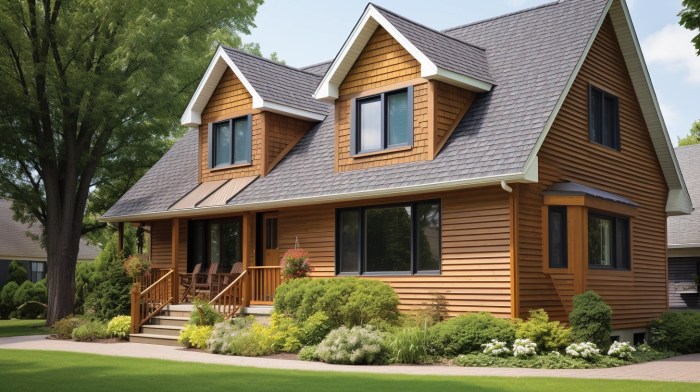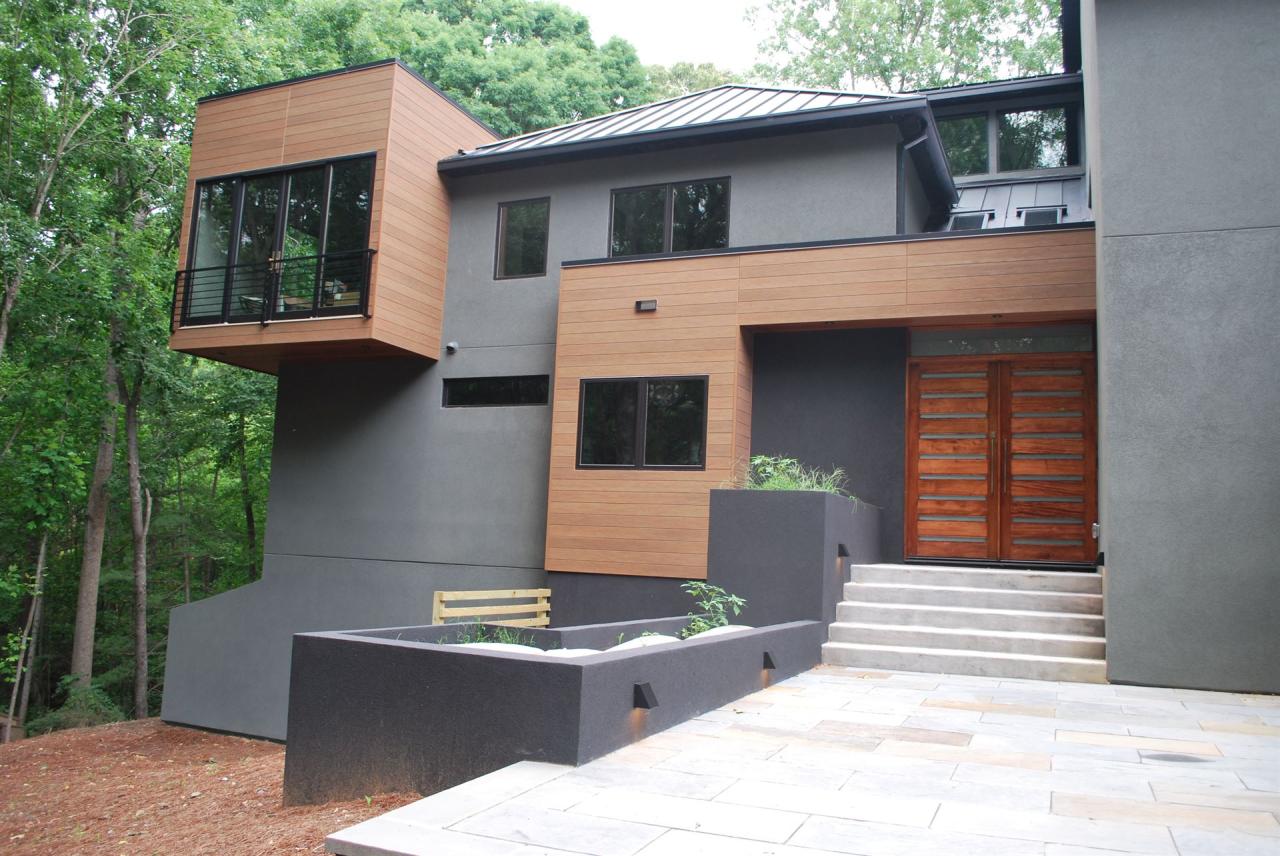Exploring the Benefits of Wood Siding for Exterior Homes
Embark on a journey into the world of wood siding for exterior homes, where durability meets aesthetic appeal and environmental benefits. Discover the versatility of wood siding in design options that can transform your home's facade.
Benefits of Wood Siding for Exterior Homes

Wood siding is a popular choice for exterior homes due to its numerous benefits that range from durability to environmental friendliness.
Durability of Wood Siding
Wood siding is known for its durability and longevity when properly maintained. With regular upkeep such as painting or staining, wood siding can last for many years, providing a strong protective barrier for your home.
Aesthetic Appeal of Wood Siding
One of the major advantages of wood siding is its natural beauty and timeless appeal. The rich textures and warm tones of wood can enhance the curb appeal of any home, creating a warm and inviting look that is unmatched by other materials.
Environmental Benefits of Wood Siding
Wood siding is a sustainable and eco-friendly choice for exterior homes. Wood is a renewable resource that can be sourced responsibly, and when properly maintained, wood siding has a lower carbon footprint compared to other materials like vinyl or aluminum.
Versatility of Wood Siding in Design Options
Wood siding offers a wide range of design options, from traditional clapboard to modern shiplap or board and batten styles. This versatility allows homeowners to customize the look of their home to suit their personal style and architectural preferences.
Types of Wood Used for Exterior Siding

Wood siding for exterior homes can be crafted from various types of wood, each with its own unique characteristics and maintenance requirements. Let's explore some popular wood species used for siding and compare their attributes.
Cedar
- Cedar is a popular choice for wood siding due to its natural beauty and durability.
- It is resistant to rot, decay, and insect damage, making it a low-maintenance option.
- Regular staining or painting is recommended to maintain its appearance and protect it from weathering.
- Although cedar may have a higher upfront cost, its longevity and minimal upkeep can make it a cost-effective choice in the long run.
Pine
- Pine is a more affordable option for wood siding, making it a popular choice for budget-conscious homeowners.
- It requires more frequent maintenance compared to cedar, as pine is more susceptible to rot and insect damage.
- Regular staining, painting, and sealing are necessary to prolong the lifespan of pine siding.
- While pine may require more upkeep, its initial cost savings can be appealing to those on a tighter budget.
Redwood
- Redwood is known for its rich color and natural resistance to decay, making it a durable choice for wood siding.
- It requires minimal maintenance compared to other wood species, as redwood is naturally resistant to rot and insects.
- Periodic staining or sealing can help enhance the longevity and appearance of redwood siding.
- Redwood siding may come at a higher price point initially, but its durability and low maintenance needs can make it a worthwhile investment.
Installation Process of Wood Siding
When it comes to installing wood siding on the exterior of a home, it is essential to follow a systematic process to ensure a durable and visually appealing result.
Preparing the Exterior Wall
- Inspect the wall for any damage or rot and repair as needed.
- Clean the wall surface thoroughly to remove dirt, mold, and debris.
- Apply a weather-resistant barrier to provide additional protection against moisture.
Methods of Installing Wood Siding
- Shiplap: Involves overlapping grooved boards to create a tight seal against the elements.
- Tongue and Groove: Features interlocking boards for a seamless and secure fit.
Insulation and Weatherproofing Tips
- Ensure proper insulation between the siding and the wall to improve energy efficiency.
- Use a high-quality sealant to prevent water infiltration and protect the wood from moisture damage.
- Leave a small gap between boards to allow for expansion and contraction due to temperature changes.
Common Challenges and Solutions
- Warped or bowed boards: Store wood siding properly before installation and use fasteners to straighten boards during installation.
- Inadequate ventilation: Incorporate vents or gaps in the siding to promote airflow and prevent moisture buildup.
- Poor alignment: Take time to measure and plan the layout of the siding to ensure a uniform and professional finish.
Maintenance and Care of Wood Siding
Regular maintenance is crucial for preserving the beauty and integrity of wood siding on your home. By following a few simple steps, you can ensure that your wood siding lasts for many years to come.
Best Practices for Cleaning and Preserving Wood Siding
Regularly clean your wood siding with a mild detergent and water to remove dirt, grime, and mildew. Avoid using harsh chemicals or power washers, as they can damage the wood.
Inspect your wood siding annually for any signs of damage or wear. Look for areas with peeling paint, discoloration, or moisture damage.
Apply a fresh coat of paint or stain every few years to protect the wood from the elements and prevent rotting.
Identifying and Repairing Common Issues
- Rot: If you notice any soft or spongy areas on your wood siding, this may indicate rot. Remove the affected wood and replace it with a new piece.
- Warping: Warped wood siding can be caused by moisture or sun exposure. To fix this issue, try to identify the source of the problem and address it accordingly.
- Insect Damage: Look for holes or tunnels in your wood siding, which may indicate insect infestation. Treat the affected area with an appropriate insecticide and replace any damaged wood.
Tips for Protecting Wood Siding from Harsh Weather Conditions
- Ensure proper ventilation around your wood siding to prevent moisture buildup, which can lead to rotting.
- Trim any trees or bushes near your home to reduce the risk of branches scratching or damaging the wood siding.
- Consider applying a weather-resistant sealant to your wood siding to provide an extra layer of protection against the elements.
Final Wrap-Up
In conclusion, wood siding offers a timeless charm coupled with practical advantages for your home's exterior. Embrace the beauty and functionality of wood siding to elevate your living space with natural elegance.
Commonly Asked Questions
What are the key benefits of wood siding for exterior homes?
Wood siding offers durability, aesthetic appeal, environmental benefits, and versatile design options.
Which are the common types of wood used for exterior siding?
Popular wood species include cedar, pine, and redwood.
How can I maintain and care for wood siding?
Regular maintenance, proper cleaning, identifying and repairing issues like rot or warping, and protecting from harsh weather conditions are essential.